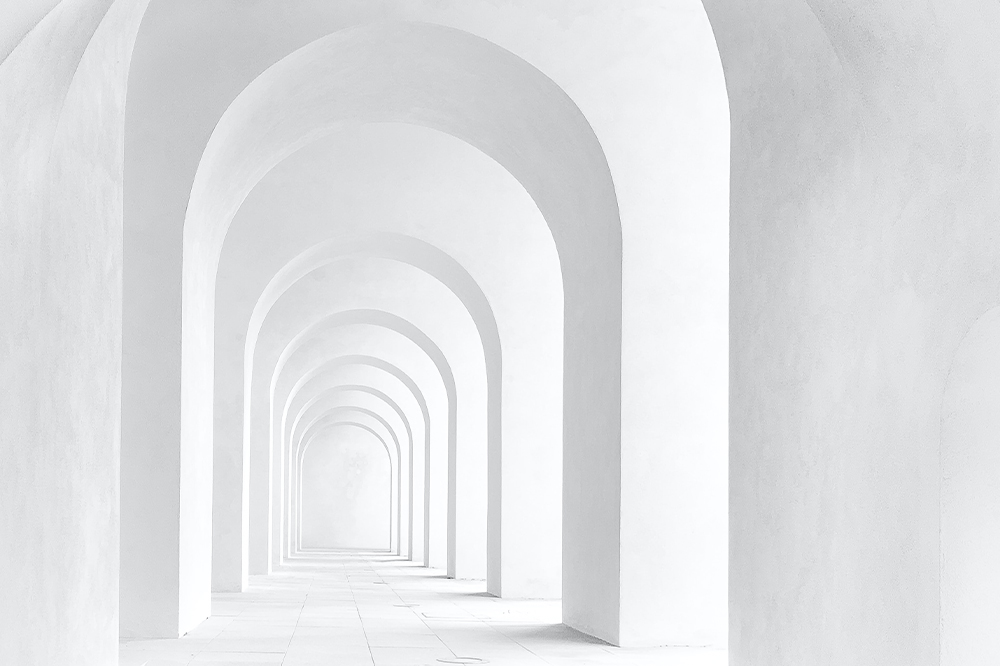"Emptiness is mistaken for sheer nothingness, but in fact,
it's a reservoir of infinite possibilities."
D.T. Suzuki
Emptiness, Void, or Sunyata in Sanskrit is the most enigmatic and most misunderstood subject in Buddhist wisdom teachings. Emptiness is the vision that cuts free all the conundrums of existence to fundamental reality. One who lives in the awareness of emptiness is one with Zen mind. Sunyata forms the most coherent and unified view of Buddha’s teaching. Sunyata brings three primary teachings together, the first one being Impermanence ( Anitya ) of all things around us. Impermanence is a universal flux of continuous change and ephemeral nature of existence of all living and nonliving. The second is no self ( Anatta ), everything comes together and forms, but having no fundamental essence, and Third is all cravings lead to suffering.
Sunyata Explained in a car metaphor :
Imagine a Tesla car. It is an aggregate of all it’s parts, the carness of this Tesla car comes together when all of the parts are assembled in one of its Giga factories. When we disassemble the car, there is no car in existence. This New Tesla car also constantly changes by changes in its parts, parts eroding under mechanical, Aerodynamic stress, corrodes under the weather, it’s software upgrades continually . Eventually, at some point, it will stop functioning, and potentially we recycle its parts. Similar to the Car, We are the sum of our body, sense organs, thoughts, feelings, and consciousness, and when we look at the essence of a person, we can’t find one.
ORIGIN OF SUNYATA :
During his lifetime, Buddha spoke about the inherent nonexistence of the essence in all things ( Dharma nairatmya ). Eight Hundred years after Buddha, the enigmatic Nagarjuna, profoundly shifted the course of Buddha’s teachings by bringing the Emptiness or Sunyata to the surface of Buddha’s vast oceanic teachings. Today When we google Nagarjuna, we can find more than a million search results. Nagarjuna is a mystic, dialectician of par excellence, poet and monk. The mystery and myth of Nagarjuna are spread across many cultures in the Indian subcontinent and far east. His Treatises on emptiness perhaps overextended to mathematical concepts of zero to digital computers running on a binary form of 1’s and zero’s ( Existence /Nonexistence) and quantum mechanics.
MY PERSONAL STORIES ON EMPTINESS :
I must share two stories intertwined with an emptiness that piqued my interest in this topic and shaped my quest to explore the subject. The first story is long back from my childhood memory.
On one of the Indian monsoon rainy days, we received a telegram ( Home Telephone lines are still a luxury at that time ). The message is brief and somewhat abrupt, my aunt and uncle ( My Father’s sister and her husband ) hospitalized and immediate family is requested to come, and nothing explained beyond. My father organized a car and immediately packed ourselves in an old Ambassador car. In gusty winds and torrential rain, we started the journey to a remote mountain range and valley where one of the biggest dams on river Krisna built in south India. On our way, we end up stopping a couple of times as river streams flooding the roads. Twelve long hours of the arduous journey, we finally reached the town of Vijayapuri. The town built around one of the largest human-made ( Literally people carrying brick by brick ) dams over river Krishna called Nagarjuna Sagar.
We went straight to the hospital, where my aunt and uncle were admitted. Kindly neighbors who joined them narrated this bizarre story. It seems my aunt and uncle went to a nearby hilltop for a family picnic. After coming back, they started behaving strangely, they called each other by different names and wholly ignored the children, they were showing strange love with each other and also bouts of violence from my uncle. This most unlikely behavior of my gentleman uncle scared my cousins, and they went to the neighbor. When a kindly neighbor tried to inquire about this, first they ignored him, when he persisted they tried to attack him. The neighbor ran away and informed my uncle’s administrative office. Finally, after a few days of this drama, they decided to join them in the Psychological ward of the government hospital. The Kind neighbor thinks they both possessed a young couple who jumped from hilltop into the river.
When we arrived at the Hospital, My Uncle tied to the bed. The doctors explained that the day before, he tried to escape from the hospital by jumping the 12 feet tall hospital gate, and it took six people to hold him down and bring him back and sedate him to calm down. Doctors suggested they will keep them in observation for a week, and after that, we can take them back home, but they must be kept under close family observation. As a kid, for me it was amusing and a bit of fun especially skipping my seventh-day Adventist school and being with cousins to explore the new town, while our parents were deeply concerned and in the discussion about the situation and what to do next.
The Vijayapuri township is built around NagarjunaKonda ( Konda is Mountain) and Nagarjuna Sagar. While constructing the dam, many nearby villages in the valley expected to submerge, and significant excavation started to relocate the villages and also to build the banks around a deep valley that spans a vast stretch of the land to hold the water body. During this time, they discovered a vast Buddhist monastery in the area, and Archaeologists tracked this back to a location called Sri Parvatha ( Sri Mountain), which is a major center of Buddhist learning in the Andhra Satavahana Kingdom. Acharya ( Teacher ) Nagarjuna used to live and taught from here. Monks from far and wide of southeast Asia and far east used to come here to live and practice.
A museum constructed on a mountain top and kept all the artifacts collected during the excavation. We collected museum souvenirs of Postcards and photographs of Buddha statues, Chaitaya ( Buddhist Memorials ), and Jataka stories on their stone Arches. A fragment connected to the ancient history of Dharma. Nagarjuna is identified as a 14th patriarch of Zen lineage and considered as a founder of the Buddhist “Middle Path “( Madhyamika ) school. Which flourished across Asia and allowed Strict monastic discipline of Buddhist practices reaching back to broader masses. When I look back, I was awed by the serenity on the faces of those statutes and the history of ancient times. My uncle and aunt stayed with us for many months through their recovery. My father, a lifelong socialist and atheist, was suddenly drawn to Jesus and his gospel. He prayed and read the Bible in sermons and became a chief exorcist to cure the possessed, another story to share another time.
Another story that connected Sunyata is the midst of rustle and bustle in Bombay ( Mumbai). During my years of quest for self-improvement, I came across a self-improvement group, which is an outcrop of the Human Potential movement that started in the 1980s in America. The group is called in short Forum and conducts a three-day seminar program. I dragged my reluctant wife into joining me on this three-day course with a promise of changing the course of Life.Mr.Rao is a charismatic facilitator of the Forum. The course goes well into midnight, and format is questions, guided self-exploration, and dialogue. On day two, the dialog reaches the crescendo with Mr. Rao Inquiring through audience questions and answers and drawing the conclusion that Life and everything around us lacks substance. He deftly draws a big circle on board and declares that Life is empty to a stunned audience. After the break, he builds his narrative on the possibility of creating meaning from emptiness and shifts somber mood to a positively charged atmosphere. I skipped day three, but that moment of reaching the conclusion that everything lacking substance stayed with me for a long time. When I look back, it is incredible how “Emptiness” is objectified and corporatized as a self-improvement education program. Fittingly Nagarjuna himself declared that “Emptiness “itself Empty.
CUTTING THRU EMPTINESS :
Emptiness ( Sunyata ) is the most profound teaching of Buddha and subsequent teachers; during his time, Buddha spoke about a lack of fundamental essence in everything, but being a skillful teacher, he focused on what is relevant at that time by person and community that could receive the teachings. He emphasized on practices that are practical and alleviate the suffering. When disciples, wandering monks from other beliefs, visiting dignitaries ask questions about Gods, Life after death, and many other complex philosophical issues. We see through the Spoken words of Buddha that he is always concerned about the practicality of his teachings and immediacy vs. Spiritual or metaphysical speculations. Buddha used the analogy of when a poisonous arrow hits a person, how do we treat them? Do you immediately put on a bandage and healing medicine, or you start the inquiry of what direction the arrow came from, what is the speed , and what material it might be. We similarly approach Sunyata. How do we apply Sunyata in this Life to live the Life of mindfulness?
Emptiness starts with a question of empty of what ? it must be empty of something; emptiness stems from” All things are impermanent and lack fundamental essence.” Emptiness also means no self-nature ( Nisvabhava in Sanskrit ); self-nature is something that can’t be produced or created or changed. It is intrinsic in nature and eternal. On the surface, all objects and beings seem to possess self-nature. We take the simile of a Tesla car. The Tesla Car exists because of thousands of parts, the engine, Car body, software that runs coming together and forming Tesla.
When we take one more step further, we can see how each part is coming into existence, the Idea for the part, Blueprint, the factory where it was made, The Machinist who made so and so forth. Same, you could apply to a cat or a person. A person is an accumulation of cells, Senses, and sense organs, feelings, and thoughts so on so forth. When you are six years old, and now you are sixty, are you the same person? Every cell in the body changed. What about how we think then and now? How do we behave? Our habits? Deep down, when we look we find, there are mental formations, the Thoughts, Feelings, Perceptions, and Images we carry, and each of them depends on something. We could attach them to the culture we grow up in, geography where we live, family relationships, creed, Religion we follow, so on so forth. In essence, everything is dependent on something, and this is called Co-Dependent Origination or Dependent co- rising ( (Pratutpa Samputapada ).
Dependent co-arising: Penetrating Interdependence :
All things and beings are not independent, and everything is transient, They are brought together by the cluster of causes of mutual dependency. In the simplistic terms, nothing exists in the world system by itself as Thich Nath Han calls this as “Interbeing” everything depends on some things. This absence of an independent self is nothing but emptiness. The beauty of emptiness is as everything is empty, nothing is essential, because everything is empty, anything is possible. Nagarjuna says, “All things are possible for the one whom emptiness is possible, nothing whatsoever is possible for the one whom emptiness is not possible.
THE SECOND DIMENSION OF EMPTINESS :
Nagarjuna is also aware of the limitations of language to explain the emptiness. The preconditioned use of language and images we identify are the lens we sense and respond to the world. The carness of all parts together is called a car because it is a societal convention, and we learned the car’s image in our kindergarten; Everything we perceive is by the collective agreement of what it should be named . We See the world through the world of labeling and conventions. If someone asks what color is this Tesla Car? We could express its color as Jasper Red, Red Orange, Burnt Sienna, Scarlet, or we can say it is Red if we don’t have the language for the Hues of Red as they don’t even exist in our conscious. Nagarjuna calls this designating based on mental or conceptual construction or agreed convention. ( Updaya Prajapati in pali ) or in plain English labeling by general convention. In essence, everything is symbolic, a Label or Sign but only a representation of actual reality.
The wisdom arising from Sunyata sees all things in reality lack inherent essence, they are interdependent, and we can only realize them in conceptual labeling. Nagarjuna expounds and declares all theoretical frameworks, including Dharma’s, are empty, including the concept of emptiness itself is empty. We can only perceive the reality through preconditioned words, Labels, and images based mental constructs vs. the Actual reality of the object.
TWO PARALLEL WORLDS OF EXISTENCE :
In our everyday world, we can’t fathom emptiness, our Life filled with many things, the work to attend, family to tend and creative pursuits, relational dramas, the endless stream of stimulations. It is tough to relate to emptiness ,we see nothing but the world full of things . Deep down, we know that we create our reality and continuously fill it, we are afraid of emptiness as the same fear as looking deep into the vastness of space with no visible edges or peering into the bottomless void of an abyss.
Lankavatara sutra explains the world operates in two levels of truths one is conventional truth ( samvriti Satya in Sanskrit ). The truth is that our everyday mundane Life is Samsara. The Higher form truth ( Paramartha Satya ) is looking into reality with an awakened mind, and this is Nirvana. Emptiness is an access bridge, the gate less gate from Samsara to Nirvana. As we dwell on emptiness by volition, we see the world through the eyes of Interdependence, impermanence and suffering, and Karma formation. How things come together and separate, How thoughts, mental formations happen, the awareness that acknowledges and relates to two truths and ability look from many perspectives of emptiness simultaneously.
This awareness permeates all beliefs and conditions and crosses the barriers of subject and object duality .Mere knowing or Clinging to the conceptual reference of emptiness itself will not allow us to see the emptiness. Our meditation on emptiness is to let go of Buddha and his lineage Bodhisattvas and their thousand Dharmas and emptiness itself. When we are free of all, we become The Wisdom of Ultimate reality of Great Emptiness ( Paramartha Aryajhana Maha Sunyata ). The awakened mind returns to the source, face to face with reality, see all phenomena as Interdependent union of the phenomenal world, and it’s labels /symbols. Yet there is no difference between the symbol/image and the thing symbolized, and both are manifestations of an underlying reality, therefore not distinct from each other. The form is emptiness , and Emptiness is form. In Sunya, there is no knowledge, and no attainment in knowledge, and there is nothing to attain.
REALITY OF EMPTINESS :
The language of conditioning limits us, and it is hard to capture Emptiness in Philosophical words. Only one could express by what it is not, Nagarjuna expounds emptiness dialectically in 88 Stanzas over 27 chapters in his Mulamadhayama Karika ( MMK). The seminal compilation and finally summarized emptiness as” Truly empty unfathomable existence. “Zen Master Dogen zenji mystically speaks about twenty types of Emptiness (Ku in Japanese ) emptiness of flower ( Kuge ) to the gate of Emptiness (Kumon), Shokujaku (Emptiness of self-nature)and declares emptiness “Formless, boundless, non-separate nature of all things ‘. Five hundred years before Buddha Lao Tzu poetically captures, “Tao is an empty vessel, it used but never exhausted, it is a fathomless source of the ten thousand beings.”
In Sutra’s Elder Subhuti, answering a question on how to gain wisdom affirmatively declares, “if one wants to experience the manifestation of Prajna ( Wisdom of Reality ), they should study and meditate on emptiness.”
THE CHANT OF EMPTINESS :
I listened to an old L.P. record of Ceremonial Soto Zen Chant from seven hundred-year-old Eiheiji Zen Monastery in Japan; the chant was recorded in 1959 by John Mitchel. John is the husband of Pioneering Early American Buddhist woman Eliese Mitchel. When I hear the sounds of temple bells ,chants and Heart Sutra , they remind me of the ancient statues I have seen in NagarjunaKonda as a child and the Dharma lineages and Teachings passed from generations to generations over Two thousand years, crossing many lands and cultures. It just warms up my heart and mind, and grows the confidence in finding the path of Zen.
English Version: Heart Sutra
O’ Sariputra,
All Phenomena are not different from sunya, and sunya is not different from Phenomena.
All is Sunya, and nothing comes into existence nor passes out of existence. There is no purity and no impurity, no ascent or descent. There is no form, no sensation, no volition, no perception of senses and no form, sound, odor, taste, touch, consciousness; There is neither field of vision, nor field of thought and consciousness. In Sunya, there is no ignorance and no extinction of ignorance, neither death nor birth. There is no suffering, no path to the annihilation of suffering.
Gone, gone, thus gone, completely gone – Gate gate Paragate, Parasamgate
Sansrikt version: Maha Prajna Paramita Hridaya sutra.
Tasmat Sariputra,
Sunyatayam Na Rupam , Na Vedana ,Na Smjna ,Na Samskara ,Na Vijnana
Na Caksu, Srota Charana Jiva Kaya , Manasa ,
Na Rupam ,Sbada , Ghanda ,Rasa ,Sparsa,Dharma
Na Caksur dhatu Yavat Na Mano Vijnana Dhatu
Na Avidya ,Na Avidya Ksayo
Yavat Na Jara ,Marana ,Na Jara ,Marana Ksayo
Na Dukkha Samudaya , Nirodha Marga
Na Jnanam , Na Prapti Na Abhisamaya
Tasmac Na Prapti ,Tva BodhiStattavanam
Prajana Paramitam ,Sattya vihartya , Citta Avarana
Na Sthitva ,Na Trasto,Viparyasa Ati Kranta ,Nishta Nirvanam
Tryadhava, Vyavasthika
Sarava Buddham, Prajnaparamita
Astriya, Anyttara, Samyak sambodhim, Abhi-Sambuddha
Tasman Jnanavyam
Prajaparamita , maha mantra ,mahavidya mantra,anuttara mantra,asma samawati mantra
Sarva dukha,prasamana satyamAmityatva
Prajna Paramita Mukha mantra Tadyatha
Gate, gate, Paragate, Parasamgate, Bodhi Svaha.
Japanese Version : The Maka Hannya Haramita Shingyo
Kwan-Jizo-Bosatsu gyo jin-hannya-haramita ji
Sho-ken go-un kai-ku do issai -ku yaku shari-shi
Shiki fu-i-ku-ku fu-i-shiki soku-ze-ku ku
Soku-ze-shiki ju-so-gyo-shiki yaku-bu-nyo-ze
Shari-shi ze-sho-ho-ku-so fu-shou fu-metsu
Fu-ku fu-jyo fu-zofu-gen ze-ko ku-chu-mu-shiki
Mu-ju-so–gyo-shiki mu-gen-ni-bi-Zesshin-i
Mu-shiki-sho-ko-mi-soku-ho-mu-gen-kai
Naishi mu-i-shiki-kai mu-mu -myo yaku mu-mu
Myo-jin naishi mu-ro–shi yaku mu-ro-shi-jin
Mu-ku-ju-metsu-do mu-chiyaku mu-toku i-mu
Sho-tokuko bodaisatta e hanya-haramita ko shin
Mukei-ge mu-kei-ge ko mu-u-ku on-ri issai-
Ten-do mu-so ku-gyo ne-han-ze sho-butsu
E-hannya -haramita ko toku-a-noku-tara-san-
Myaku-san-bo-dai ko chi-hannya-haramita ze dai
-Shu ze-dai-myo-shu Ze mu-jo-shu-ze mu-to-do-shu
No-jo-issai-ki shinjitsu fuko ko-setsu hannya -haramita-
Shu soku setsu-shu watsu
Gyatei,gyatei,hara gyate haraso-gyatei boji sowaka




